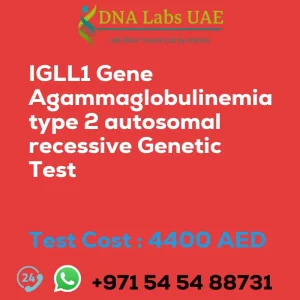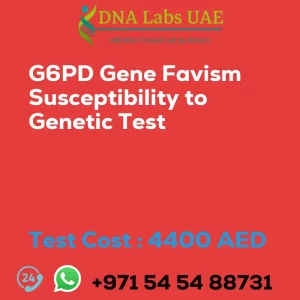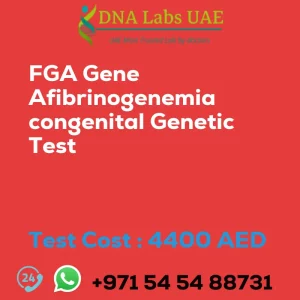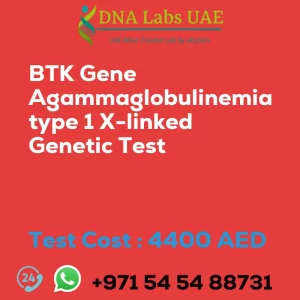RPS28 Gene Diamond Blackfan Anemia Type 15 with Mandibulofacial Dysostosis Genetic Test
Test Name: RPS28 Gene Diamond Blackfan Anemia Type 15 with Mandibulofacial Dysostosis Genetic Test
Components: NGS Technology
Price: 4400.0 AED
Sample Condition: Blood or Extracted DNA or One drop Blood on FTA Card
Report Delivery: 3 to 4 Weeks
Test Type: Hematology
Doctor: Hematologist
Test Department: Genetics
Pre Test Information: Clinical History of Patient who is going for RPS28 Gene Diamond Blackfan Anemia Type 15 with Mandibulofacial Dysostosis NGS Genetic DNA Test. A Genetic Counselling session to draw a pedigree chart of family members affected with RPS28 Gene Diamond Blackfan Anemia Type 15 with Mandibulofacial Dysostosis NGS Genetic DNA Test gene RPS28
Test Details
NGS (Next-Generation Sequencing) Genetic Test is a type of genetic test that uses advanced sequencing technologies to analyze multiple genes simultaneously. In the case of RPS28 gene Diamond Blackfan Anemia Type 15 with Mandibulofacial Dysostosis, this test would involve sequencing the RPS28 gene to identify any mutations or variations that may be associated with the condition.
Diamond Blackfan Anemia (DBA) is a rare genetic disorder characterized by a deficiency in red blood cell production, leading to anemia. DBA can be caused by mutations in various genes, including the RPS28 gene. Type 15 refers to a specific subtype of DBA caused by mutations in the RPS28 gene.
Mandibulofacial Dysostosis is a condition characterized by abnormal development of the jaw and facial bones. It can occur as a result of various genetic mutations, including those associated with DBA.
The NGS Genetic Test for RPS28 gene DBA Type 15 with Mandibulofacial Dysostosis would involve obtaining a DNA sample from the individual, usually through a blood or saliva sample. The DNA is then sequenced using NGS technology to identify any mutations or variations in the RPS28 gene.
The results of the test can help confirm a diagnosis of DBA Type 15 with Mandibulofacial Dysostosis and guide appropriate treatment and management options.
| Test Name | RPS28 Gene Diamond Blackfan anemia type 15 with mandibulofacial dysostosis Genetic Test |
|---|---|
| Components | |
| Price | 4400.0 AED |
| Sample Condition | Blood or Extracted DNA or One drop Blood on FTA Card |
| Report Delivery | 3 to 4 Weeks |
| Method | NGS Technology |
| Test type | Hematology |
| Doctor | Hematologist |
| Test Department: | Genetics |
| Pre Test Information | Clinical History of Patient who is going for RPS28 Gene Diamond Blackfan anemia type 15 with mandibulofacial dysostosis NGS Genetic DNA Test. A Genetic Counselling session to draw a pedigree chart of family members affected with RPS28 Gene Diamond Blackfan anemia type 15 with mandibulofacial dysostosis NGS Genetic DNA Test gene RPS28 |
| Test Details |
NGS (Next-Generation Sequencing) Genetic Test is a type of genetic test that uses advanced sequencing technologies to analyze multiple genes simultaneously. In the case of RPS28 gene Diamond Blackfan anemia type 15 with mandibulofacial dysostosis, this test would involve sequencing the RPS28 gene to identify any mutations or variations that may be associated with the condition. Diamond Blackfan anemia (DBA) is a rare genetic disorder characterized by a deficiency in red blood cell production, leading to anemia. DBA can be caused by mutations in various genes, including the RPS28 gene. Type 15 refers to a specific subtype of DBA caused by mutations in the RPS28 gene. Mandibulofacial dysostosis is a condition characterized by abnormal development of the jaw and facial bones. It can occur as a result of various genetic mutations, including those associated with DBA. The NGS Genetic Test for RPS28 gene DBA type 15 with mandibulofacial dysostosis would involve obtaining a DNA sample from the individual, usually through a blood or saliva sample. The DNA is then sequenced using NGS technology to identify any mutations or variations in the RPS28 gene. The results of the test can help confirm a diagnosis of DBA type 15 with mandibulofacial dysostosis and guide appropriate treatment and management options. |







